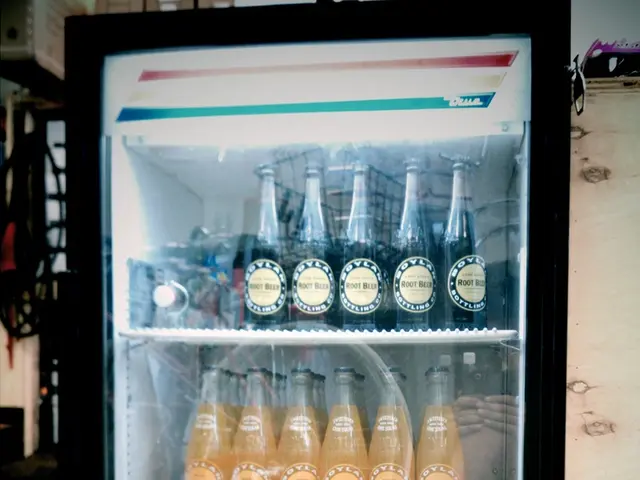Expert Consultation: Exploring Solid Surfaces
HIMACS, a premium solid surface product manufactured by LX Hausys, is making waves in the world of design and architecture. Known for its exceptional performance, design capabilities, safety, and sustainability, HIMACS offers a unique blend of style and functionality.
Performance
HIMACS is water, stain, and UV-resistant, making it ideal for both indoor and outdoor applications. It can withstand many common chemicals and pollutants, ensuring its longevity in high-traffic or public-facing areas. The material is resistant to fading, peeling, corrosion, and mould growth, maintaining its pristine appearance over time.
Design Capabilities
HIMACS offers a vast range of colour choices, from marble-like veining and earthy stone effects to subtle neutrals, bold vibrant hues, and colours featuring recycled content. Its versatility allows it to be thermoformed into any shape and joined with virtually invisible seams, making it a perfect choice for sleek and seamless designs.
Safety and Sustainability
In terms of safety, HIMACS is non-porous, limiting bacteria growth and making it hygienic for kitchens and bathrooms. It is also certified to EN13501-1: B-s1-d0 for fire safety and emits no VOCs. LX Hausys takes its environmental ethics seriously, providing a full EPD for the product, which has always been silica free.
Comparing Solid Surface, Natural Stone, and Composite Surfaces
While HIMACS stands out in many ways, it's helpful to compare it with other popular materials like natural stone and composite surfaces. Here's a table outlining the key differences in terms of performance, design capabilities, safety, and sustainability:
| Aspect | Solid Surface | Natural Stone | Composite Surface | |-----------------------|--------------------------------------------------------------------------|-----------------------------------------------------------------------------|----------------------------------------------------------------------| | Performance | Non-porous, resistant to bacteria, easily repairable and maintainable; can be scratched but is generally durable indoors[5][3]. | Porous and heavy; long-lasting structural integrity but requires sealing and specific care to avoid staining, moss growth, and cracks[1][4][5]. | Lightweight, moisture-resistant, UV-resistant, low maintenance, resists warping, splintering, rot, and insect damage; may stain if grease is not cleaned promptly[1][2][4]. | | Design Capabilities | Highly customizable with a wide range of colours, patterns, and textures; can mimic natural stone, wood, or metallic finishes; seamless appearance possible[3][5]. | Natural variation in texture and colour with authentic natural patterns; each piece is unique but less customizable; ages with weathering[1][5]. | Consistent and controllable colour and texture; hand-tinted finishes resist fading; some mimic wood or traditional materials; less natural variation than stone[1][2][4]. | | Safety | Non-porous surface limits bacteria growth, making it hygienic for kitchens and bathrooms; repairable if damaged[5][3]. | Heavy and porous, installation is labor-intensive and carries higher safety risks during handling; natural stone is non-combustible but may degrade physically over time[1]. | Generally rated Euroclass D for fire safety (less fire-resistant than stone which is non-combustible); designed with slip resistance and heat dissipation improvements, particularly for exterior decking[1][2]. | | Sustainability | Typically manufactured from acrylic/polyester resins; longevity and repairability reduce waste but production involves plastics; recyclable options vary[3][5]. | Natural, long-lasting material with very low manufacturing emissions, but quarrying has environmental impact; requires maintenance products that may affect sustainability[1][5]. | Made from a blend of recycled plastics and wood fibers; durable and low maintenance reduces need for replacement or treatments; can support sustainable landscaping practices[2][4]. |
Additional Benefits of HIMACS
HIMACS offers a wide range of preformed sinks and basins for sleek integration into countertops. Its translucency allows for high-impact exterior installations where lighting is involved, as demonstrated by a recent public realm art project in Reading. HIMACS is compatible with all kinds of fixings and electronic and audiovisual systems, making it ideal for contemporary architectural uses.
LX Hausys provides a team of experts to assist architects and designers with the specification process. They also offer a variety of CPDs for architects to learn more about the possibilities and finer details of working with solid surface. With excellent stock holding and a network of highly trained and skilled fabricators, LX Hausys ensures that design visions can be turned into reality.
In conclusion, HIMACS is a premium solid surface product that offers a unique blend of style, functionality, safety, and sustainability. Its versatility, durability, and ease of maintenance make it a worthy investment for a wide range of applications, from sleek kitchen countertops to high-impact public art installations.
- In the realm of home-and-garden design, HIMACS' durability and resistance to fading, peeling, corrosion, and mould growth make it an excellent choice for both indoor and outdoor lifestyle applications.
- With its vast array of colours and minimal environmental impact due to its silica-free production, HIMACS technology demonstrates a commitment to sustainability in the environment sector, while its seamless design capabilities contribute to modern, contemporary lifestyles.




